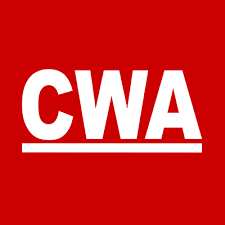Construction unions don’t just deliver financial benefits to their members, but often to private developers too, a recent report found.
Cornell University’s School of Industrial and Labor Relations recently authored a report that concluded developers are likely to save money by using union labor on private prevailing wage projects.
“The conclusion is that prevailing wage laws do seem to make union labor a little bit cheaper than non-union labor because of the vast differences in which a union shop versus an open shop provide their workers with comprehensive benefits,” said Russel Weaver, the research director of the ILR School’s Buffalo Co-Lab and co-author of the report.
The ILR hosted a panel conversation on Sept. 12 between the reports’ authors, Manhattan District Attorney Alvin Bragg, labor unions and the real estate industry to discuss the role prevailing wage projects play in building safer, more cost-efficient projects in New York City.
At the beginning of 2022, New York state expanded the scope of prevailing wage law to cover certain types of private construction projects that receive significant portions of public funding. A goal of the legislation is to make private construction more competitive for union labor. Developers, who might have hired non-union contractors that pay lower wages and offer workers fewer benefits, now have greater incentive to consider using union labor because prevailing wage rates require non-union contractors to pay closer to union-level wages.
“What this law does is, as the report showed, really eliminate labor costs from the equation. So it really should be leveling the playing field,” said Aislin McGuire, general counsel for the Contractors’ association of Greater New York.
The idea for the new prevailing wage rules is to equalize the labor costs of union and non-union contractors, but in practice unions often end up costing less due to differences in how the law treats fringe benefits, Weaver found in his research.
In union shops, almost all employees receive group health and retirement benefits, whereas many non-union contractors do not provide this for all their employees. The prevailing wage rules dictate that if a non-union firm isn’t providing their employees a comprehensive group benefits package, the firm has to pay that hourly rate to their employees on top of the prevailing wage.
Weaver presented a tool that the ILR created with the report that calculates out the cost of a union versus nonunion contractor for future projects based on the level of benefits they offer.
So why if unions provide cost savings on prevailing wage projects, do they still lose jobs in the bidding process? Weaver said that three reasons might account for this. One, non-union bidders might be underbidding and causing overruns; two, differences in materials or technology; or three, non-union bidders might have misclassified workers.
That’s where stronger prevailing wage enforcement comes into play. Bragg said that his office has been working to increase its prevailing wage enforcement efforts and wants to keep working with unions and other government partners to take on those cases.
“The same employers who are paying criminally low wages often are creating very unsafe work environments. So [there are] great opportunities in terms of enforcement,” Bragg said.
David Caraballoso, vice president of the NYC District Council of Carpenters, said that enforcement would also have to come from the city’s building agencies, the School Construction Authority and the MTA.
“It’s gonna have to come from several different places,” he said.




